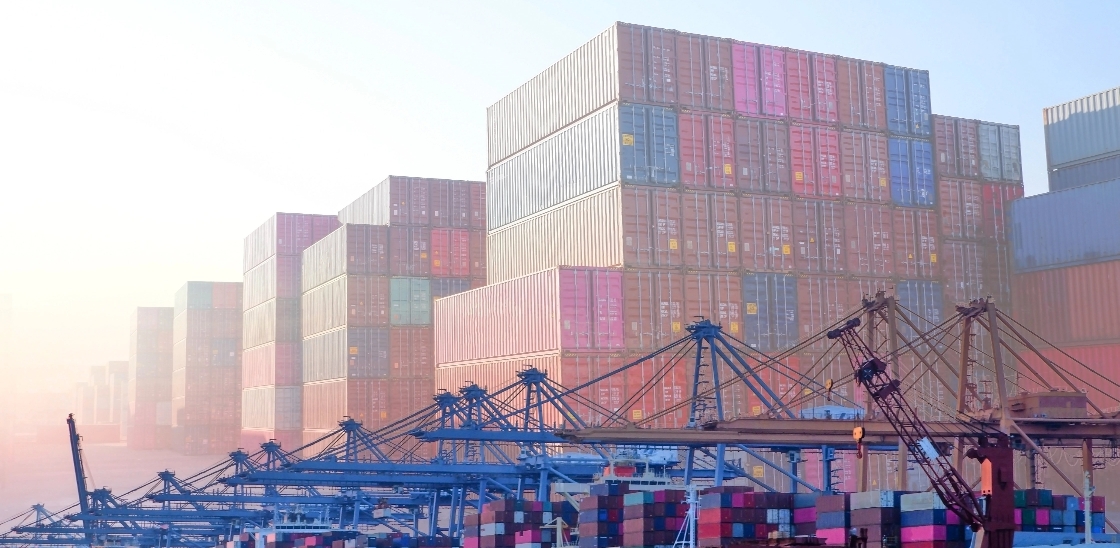Resilient supply chains using generative AI
Reading Time: 5 minutes

Generative AI is currently at a significant inflection point for business adoption. According to IDC, by 2026, 55% of Forbes Global 2000 OEMs are projected to have revamped their service supply chains with AI1.
Global supply networks are intricately interwoven, with several dependencies and stakeholders. The inherent complexity tests efficiency, robustness, and cost optimization, making supply chain intelligence an essential component of supply chain management. What is required is a method for quickly analyzing data from internal and external sources to uncover patterns and areas for development.
Top supply chain use cases for leveraging generative AI
Generative AI enables efficient interactions among the teams managing inventory, partners and assets. Here are some possible use cases across supply chain that are enabled through generative AI:
| Use-cases | Application of generative AI |
|---|---|
| Supply chain intelligence | Detecting and simulating potential disruptions to the supply chain. By analyzing congested ports, shipment routes, and tier-n vendor mapping, generative AI can be leveraged to anticipate risks and recommend actions to mitigate them. This enables supply chain managers to proactively deploy mitigation strategies, create contingency plans, and increase overall resilience. |
| Supply chain planning | Supporting communication with advanced planning solutions using natural language. Questions about all aspects of the supply chain, including planning, inventory, supply assurance, order management, and worldwide logistics, can be easily asked, allowing even inexperienced users to explore complex topics and data. |
| Supplier selection and management | Enabling supplier evaluation and relationship management by analyzing financial reports, performance indicators, customer feedback, and other data, and then producing insights and predictions about supplier performance, risk factors, and collaboration prospects. |
| Scenario analysis and optimization | Simulating what-if scenarios in a digital twin environment that mimics the real-world supply chain. By analyzing the impact of changes in demand patterns, production capacity, or inventory strategies, supply chain managers can improve risk assessments and proactive decision-making based on real-time conditions. |
| Contract analysis and tender assessment | Support in drafting, reviewing, and updating contracts by extracting relevant clauses, structuring texts, or generating summaries. It also helps to review and evaluate contract terms, identify potential risks, automates legal analysis and ensure compliance. It can help identify opportunities for cost savings and simulate complex negotiation scenarios to choose effective tactics. |
| Network design and collaboration | Identifying the optimal network configuration by considering factors such as facility locations, transportation routes, and resource allocation. It generates and evaluates various potential network designs to identify the most efficient arrangement, while trading-off between cost, availability and risk. |
| Predictive maintenance and asset efficiency | Creating new maintenance plans to correlate with the time that equipment is likely to fail. This allows manufacturers to adjust their maintenance schedules to only when it is necessary, reducing downtime and costs while also extending the life of their equipment. |
| Fraud detection | Examining past transactional data, invoice information, shipping details, etc. to study patterns and attributes of genuine transactions in large datasets. These models pinpoint and flag transactions that deviate from the learned patterns, thereby strengthening security across the supply chain. |
How is generative AI making supply chains intelligent?
Generative AI offers great flexibility as it’s not dependent on strict system requirements and can easily handle vast unstructured data. Here are some principal ways in which generative AI is making supply chains smarter, intuitive and agile than ever:
- Autonomous decision-making: Generative AI makes it possible for users across an organization to take advantage of the predictive insights generated by the underlying enterprise AI applications. Generative AI can act as an intelligent agent which continuously and incrementally monitors plans or actuals to propose adjustments back to users in the form of simple actionable formats like insights for validation. This allows more autonomy to the systems with only executive, decision-making and strategic actions lying with the users.
- Faster query resolution and information retrieval: Generative AI as a complimenting layer on top of dashboards can extract vital insights from key metrics and trends, with a holistic view of the supply chain health in real-time. The conversational user experience marks a fundamental shift in the human-computer interaction model. Chatbots and language processing tools allow users to query supply chain data in a structured or unstructured format and in multi-languages. The output information retrieved in structured formats like reports, emails, or role-specific insights.
- Higher resilience: Generative AI can be trained on historical data, weather, external factors, environmental data, and supply chain disruptions to learn fundamental patterns and simulate future events. This helps to build resilient supply chains that serve as a foundation to build a rich set of transactional and event data. The data can provide insights and real-time visibility across the supply chain to identify bottlenecks, track shipments, foresee and mitigate risks and respond promptly to disruptions.
- Data augmentation with synthetic data: Generative AI can improve the quality and completeness of data sets by creating synthetic data that closely resembles the real data. These datasets enable robust training of deep learning models, reduce overfitting and bias, and allow generalization and better performance in real-world scenarios. Generative AI models help to create more diverse and representative data sets that can amplify tasks like time series forecasting or pattern recognition, image generation, defect/anomaly detection, fraud detection, robot/drone programming, etc.
Realizing the value in supply chains from generative AI
Generative AI is ushering in a new era of intelligent, and responsive supply chains. Making informed decisions throughout the supply chain, from selecting vendors to fulfillment optimization, helps lower costs, minimize waste, and increase overall operational efficiency.
- A leading logistics company in the US is using a proprietary AI platform to optimize picking routes within its warehouses, boosting productivity by about 25% while cutting down on operational costs incurred on space and materials handling.
- A European container shipping company is using generative AI-powered bots for quicker vendor terms’ negotiation.
- An American technology giant uses generative AI for dynamic routing optimization to consider real-time factors like traffic and weather, thus reducing delivery times and transportation costs by 30%.
Improving supply chain resilience enables the business to respond swiftly to changing market conditions while also providing better agility to capitalize on emerging opportunities based on real-time insights and recommendations. Generative AI could bring companies closer to resilient, sustainable, cost-effective supply chains that the future will require.
Read 7 best practices to get started with generative AI in supply chains to seamlessly implement generative AI for sustainable success
References:
Featured blogs
Subscribe to get latest insights
Talk to our experts
Get the best ROI with Sigmoid’s services in data engineering and AI
Featured blogs
Talk to our experts
Get the best ROI with Sigmoid’s services in data engineering and AI






